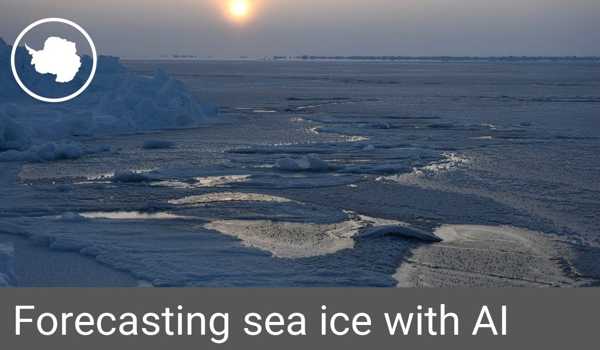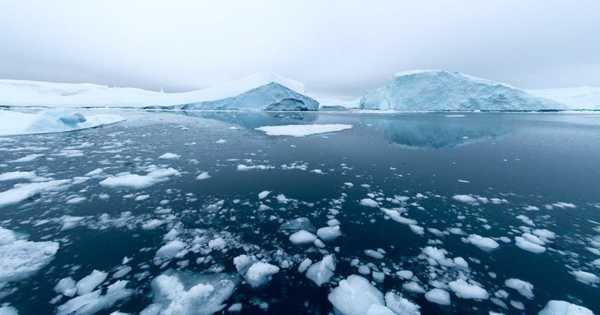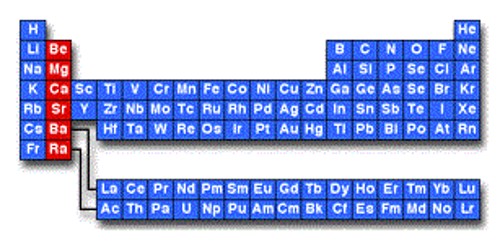The new sea ice forecasting framework combines data from satellite sensors with climate model output in ways that traditional systems simply cannot. A new AI (artificial intelligence) tool is set to help scientists forecast Arctic sea ice conditions months in advance. The improved predictions could serve as the foundation for new early-warning systems designed to protect Arctic wildlife and coastal communities from the effects of sea ice loss.
An international team of researchers led by the British Antarctic Survey (BAS) and The Alan Turing Institute describe how the AI system, IceNet, addresses the challenge of producing accurate Arctic sea ice forecasts for the coming season, which has eluded scientists for decades.
Because of its complex relationship with the atmosphere above and the ocean below, sea ice, a vast layer of frozen seawater that appears at the North and South poles, is notoriously difficult to forecast. The sensitivity of sea ice to rising temperatures has resulted in a halving of the summer Arctic sea ice area over the last four decades, equivalent to a loss of an area roughly 25 times the size of Great Britain. These rapid changes will have far-reaching consequences for our climate, Arctic ecosystems, and Indigenous and local communities whose livelihoods are dependent on the seasonal sea ice cycle.
IceNet, the AI predictive tool, is almost 95% accurate in predicting whether sea ice will be present two months ahead—better than the leading physics-based model.
The sensitivity of sea ice to rising temperatures has resulted in a halving of the summer Arctic sea ice area over the last four decades, equivalent to a loss of an area roughly 25 times the size of Great Britain, they claim. The researchers noted that these accelerating changes will have dramatic consequences for the global climate, Arctic ecosystems, and Indigenous and local communities whose livelihoods are dependent on the seasonal sea ice cycle.
Using artificial intelligence, scientists will be able to forecast Arctic sea ice conditions months in advance (AI). According to the researchers, IceNet is nearly 95% accurate in predicting whether sea ice will be present two months in advance – better than the leading physics-based model.
The Alan Turing Institute funded the lead author, Tom Andersson, Data Scientist at the BAS AI Lab “The Arctic is a region at the forefront of climate change, with significant warming over the last 40 years. IceNet, which runs thousands of times faster than traditional methods, has the potential to fill an urgent gap in forecasting sea ice for Arctic sustainability efforts.”

According to Dr. Scott Hosking, Principal Investigator, Co-Leader of the BAS AI Lab, and Senior Research Fellow at The Alan Turing Institute: “I’m excited to see how AI is forcing us to reconsider how we conduct environmental research. Our new sea ice forecasting framework combines data from satellite sensors with climate model output in ways that traditional systems simply cannot.”
“The Arctic is a region on the frontlines of climate change, and it has warmed significantly over the last 40 years,” said study lead author Tom Andersson, a data scientist at the BAS AI Lab. “IceNet has the potential to fill a critical gap in forecasting sea ice for Arctic sustainability efforts, and it runs thousands of times faster than traditional methods,” said Andersson.
The new sea ice forecasting framework combines data from satellite sensors with climate model output in ways that traditional systems simply cannot, according to principal investigator Scott Hosking, co-leader of the BAS AI Lab.
Unlike traditional forecasting systems that attempt to directly model physical laws, the authors built IceNet around a concept known as deep learning. The model ‘learns’ how sea ice changes from thousands of years of climate simulation data, as well as decades of observational data, to predict the extent of Arctic sea ice months in advance.
Finally, Tom Andersson says: “Now that we’ve shown that AI can accurately forecast sea ice, our next goal is to create a daily version of the model and have it publicly available in real-time, similar to weather forecasts. This could serve as an early warning system for the dangers associated with rapid sea ice loss.”
















